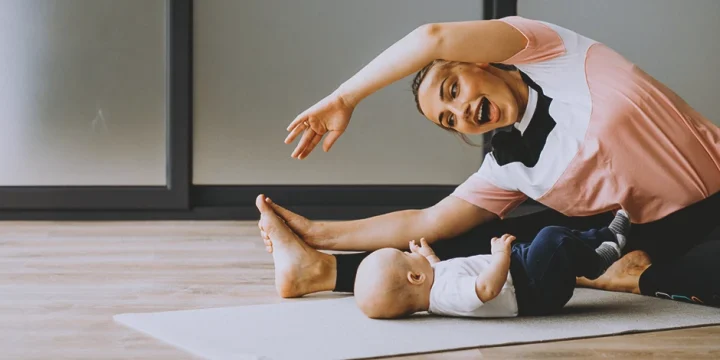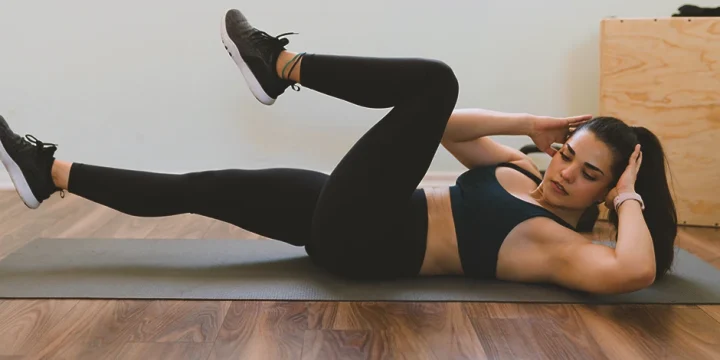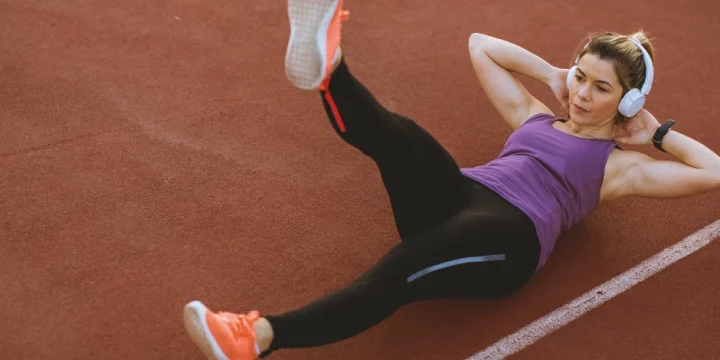Diastasis recti is a common condition pregnant women get when the rectus abdominis muscle, or six-pack muscles, weaken and separate to allow space for a growing uterus. The separation can last months or years after giving birth for some women.
I’ve been in the fitness industry for more than a decade now, and one of the most often questions I get is which exercises are the best diastasis recti workout for correcting diastasis recti.
So, I’ve put together these eight exercises that can help you heal your post-pregnancy body and bring your muscles back together.
Quick Summary
- The best exercises for diastasis recti include transverse abdominal breathing, abdominal bracing, bent knee side plank, bent leg dead bug, glute bridges, and reverse sit-ups.
- You can heal diastasis recti by strengthening your core muscles, deep breathing, avoiding lifting heavy weights, and doing some exercises like crunches and sit-ups.
- According to the Journal of Women’s & Pelvic Health Physical Therapy, Diastasis recti affects up to 90% of women in the early postpartum period
- From personal experience, incorporating diastasis recti exercises can be a game-changer for post-pregnancy physical health and confidence.
Best Diastasis Recti Exercises

1. Abdominal Bracing
Also known as the “hollowing exercise," abdominal bracing will help you strengthen your rectus abdominis muscles and eliminate diastasis recti.
To perform this exercise:
- Lay on your back with your knees bent and your feet flat on the floor.
- Take a deep breath in and, as you exhale, draw your navel in towards your spine, like you are pulling a tight corset around your waist.
- Hold for 10–15 seconds, keeping your abdominal muscles engaged and your back flat against the floor.
- Repeat this for several breaths.
Post You May Like: Top Core Exercises From the Experts
2. Bent Knee Side Plank
This Bent Knee Side Plank is an efficient exercise for working deep core muscles and improving overall stability.
To get started:
- Lay on your side with your bottom elbow on the ground and your feet stacked on top of one another.
- Bend your bottom knee and place your foot behind the ground for extra support.
- Engage the core and lift your hips off the ground, forming a straight line from your head to your heels.
- Hold this position as long as possible, and then repeat on the other side.
3. Bent Leg Dead Bug
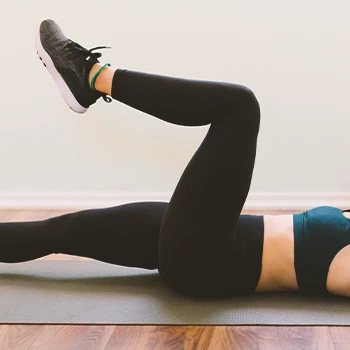
This workout effectively targets the transverse abdominis, pelvic floor, and erector spinae muscles.
In my experience as a fitness coach, maintaining controlled movements and preventing arching of the lower back or shoulder lifting is crucial for optimal results.
How to do this exercise:
- Lie flat on the back with arms extended to the ceiling and knees bent at 90 degrees.
- Slowly lower your left arm and right leg towards the floor while maintaining a stable and engaged core.
- Return to the start, and repeat on the opposite side.
While performing this exercise, maintaining proper posture throughout your day can further support the healing process, emphasizing the importance of ergonomics in daily activities.
Dead Bug is one of the best transverse abs exercises that can transform your core.
4. Reverse Sit-Ups
Also known as the bent knee leg lift, reverse sit-ups are a great abdominal exercise to help build strength and stability in the core without tensing the abdominal and pelvic areas.
To perform a reverse sit-up:
- Lay flat on the back with your legs straight.
- Place your hands behind your head and curl your chin towards your chest.
- Activate your abdominal muscles to lift your upper body off the floor, bringing the belly button towards the spine.
- As you lift, keep the elbows wide and the shoulders relaxed, avoiding any tension in the neck area.
- Lower yourself back to the starting position and repeat for 10–15 repetitions.
Sit-ups burn belly fat as they target the abdominal muscles to strengthen and tighten the core.
5. Transverse Abdominal Breathing
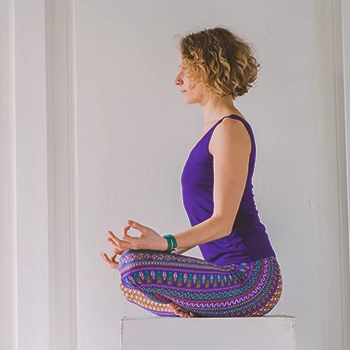
This exercise will help you properly engage the pelvic floor and transverse abdominis muscles, making it an excellent tool for strengthening your deep abdominal muscles.
To get started:
- Find a comfy seated or lying position and start by taking a deep breath through your nose.
- As you exhale, draw your belly button toward your spine, engaging your transverse abdominis muscle.
- Hold for a few seconds, then release.
- Repeat this for several breaths, focusing on the sensation of your belly button drawing inward with each exhale.
“Known as the “corset” muscle, the transversus abdominis is a deep abdominal muscle that sits horizontally around your abdomen. It plays a key role in protecting and stabilizing your spine.”
- Katey Davidson, Personal Trainer & Editor at Healthline.com
6. Glute Bridges
Not only is it an effective way to tone your glutes, but it's also one of the best exercises for treating abdominal separation or diastasis recti.
To do glute bridges:
- Lie on the back with knees bent, and feet flat on the floor.
- Slowly lift your hips off the ground until your body forms a straight line from your knees to your shoulders.
- Squeeze your glutes as you lift and lower your hips, making sure to engage your core muscles as well.
Learn More: Know the Difference Between Glute Bridge vs. Hip Thrust
7. Chair position

This exercise will encourage your ab muscle to return to their initial position before the gap.
To do the chair position:
- Stand up straight and tall, with your feet hip-width apart and your knees slightly bent.
- Exhale deeply while pushing your navel into your spine, tucking the tailbone underneath and lifting the chest up. You will raise your arms to shoulder height while pulling in your abdominals.
- As you inhale, deeply and slowly lower down until you are sitting in an imaginary chair - keeping your spine straight and abdominals pulled in as you are lowering down.
- Hold for 30 seconds before standing back up again on an exhale.
- Repeat this exercise several times for the best results.
8. Bird Dog
The bird dog exercise is an efficient exercise to work your deep core muscles and build stability in your lower back.
To do this exercise:
- Start on the hands and knees with your wrists aligned under your shoulders and your knees underneath your hips.
- Begin by contracting the abdominals to draw the navel towards the spine, avoiding arching of the lower back.
- Reach out with one arm, extending forward parallel to the ground, and simultaneously reach out with the opposite leg behind you, keeping it parallel with the floor.
- Gently hold for 10 seconds before returning back to starting position.
- Repeat this exercise on each side for 8-10 reps per side for the best results.
Bird Dog is one of the best abdominal exercises to quickly get your packs back.
Additional Tips
- Nutritional Support: Effective recovery from diastasis recti involves more than exercises; it requires nutritional attention too. I've seen clients make faster progress by adding protein-rich foods to their diet, aiding muscle repair and strength.
- Advanced Rehabilitation Techniques: Yoga and Pilates, alongside regular exercises, can significantly enhance recovery. Clients who've incorporated these into their routines not only strengthened their core but also improved their overall body alignment.
How to Fix Diastasis Recti?

To address diastasis recti, focus on strengthening your abdominis muscles with recommended exercises.
Research in the Journal of Women’s & Pelvic Health Physical Therapy shows that up to 90% of postpartum women experience this condition [1].
While it won't disappear overnight, some exercises can make it go away, and a great place to start, according to Very Well Family, is being aware of the bad exercises to avoid or activities that worsen your condition and engaging in deep breathing exercises [2].
Consider seeing a pelvic floor physical therapist who can guide you through safe and effective exercises.
“Make sure to avoid certain activities and exercises that may make diastasis recti worse. These include crunches, ab twists, planks, backward bends that stretch the abdominal area, certain yoga poses, or any type of heavy lifting activities that bulge out the stomach.”
- Sara Lindberg, Health & Fitness Editor at Verywellfamily.com
Remember, consistent core engagement throughout the day gradually improves diastasis recti and deep abdominal strength.
What Are The Benefits of Diastasis Recti Exercises?

Diastasis recti exercises enhance core strength, protect the spine, and prevent muscle injuries.
These exercises consolidate the abdominal wall, boosting stability.
From my coaching experience, a stronger core not only tones your midsection but also improves posture.
Regular practice promotes body alignment and balance, reducing lower back strain and the risk of chronic pain or injuries.
Learn More: Best Postpartum Workout: Exercises and Tips for New Moms
FAQs
What Is Diastasis Recti?
Diastasis Recti is a common condition in which the tissue between the abdominal wall muscles weakens or stretches over time. This separation of the ab muscles can lead to developing a “pooch” and can cause instability in the core, leading to back pain and other postural issues.
How Long Does it Take to Fix Diastasis Recti with Exercise?
It takes a few weeks to several months to fix diastasis recti with exercise to fix diastasis recti. The time frame depends on the condition`s severity and how diligently you complete your exercise program.
How Often Should I Do Diastasis Recti Exercises?
You should do diastasis recti exercises three times a week with at least 24 hours of rest or recovery between workouts.
It is recommended to start slowly and gradually increase the intensity as you progress.
Additionally, be sure to include other forms of physical activity such as low-impact cardio, stretching, and strength training in order to gain full-body benefits.
References:
- https://journals.lww.com/jwphpt/
- https://www.verywellfamily.com/5-best-diastasis-recti-exercises-5095816
About The Author
You May Also Like

